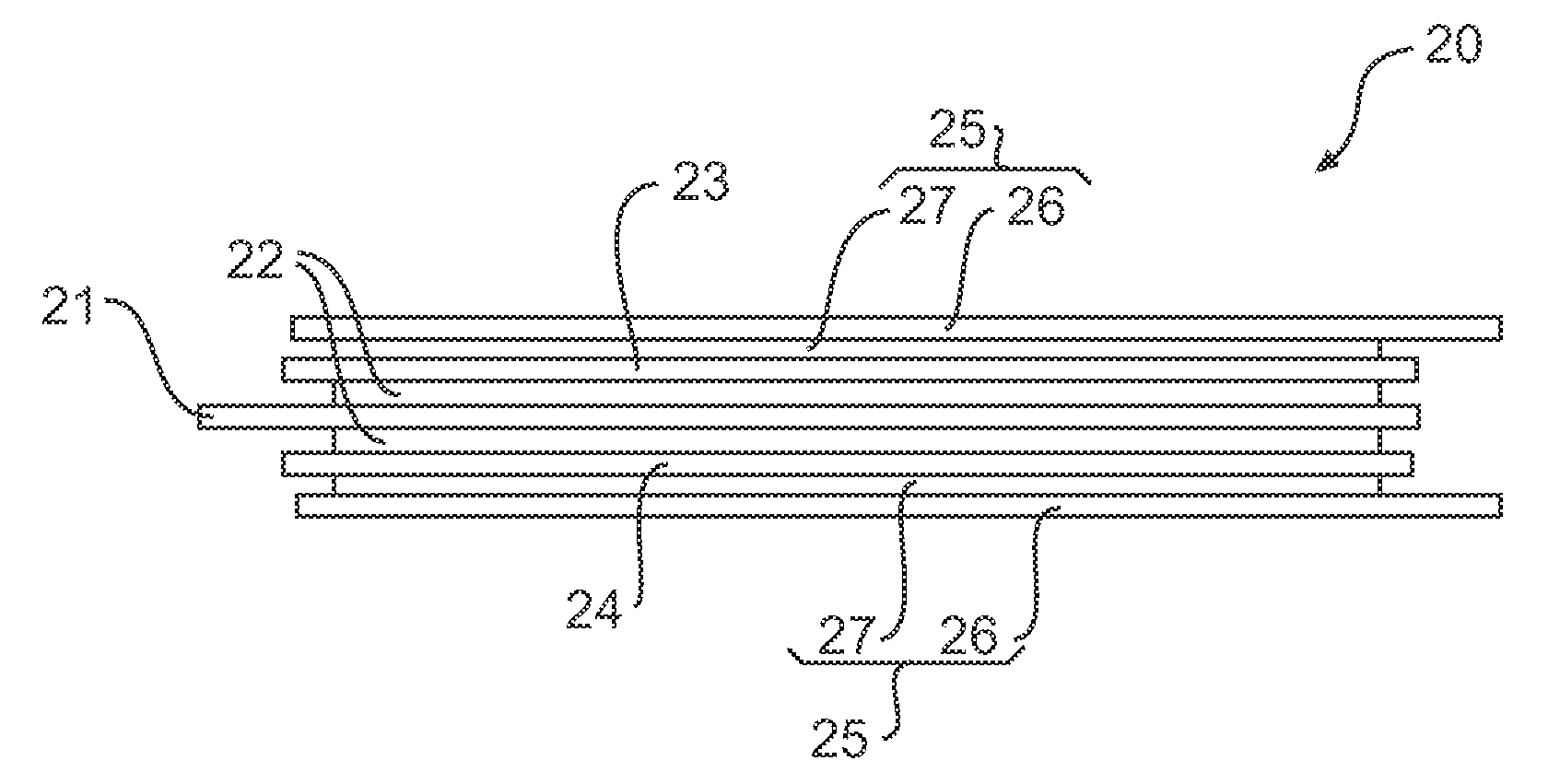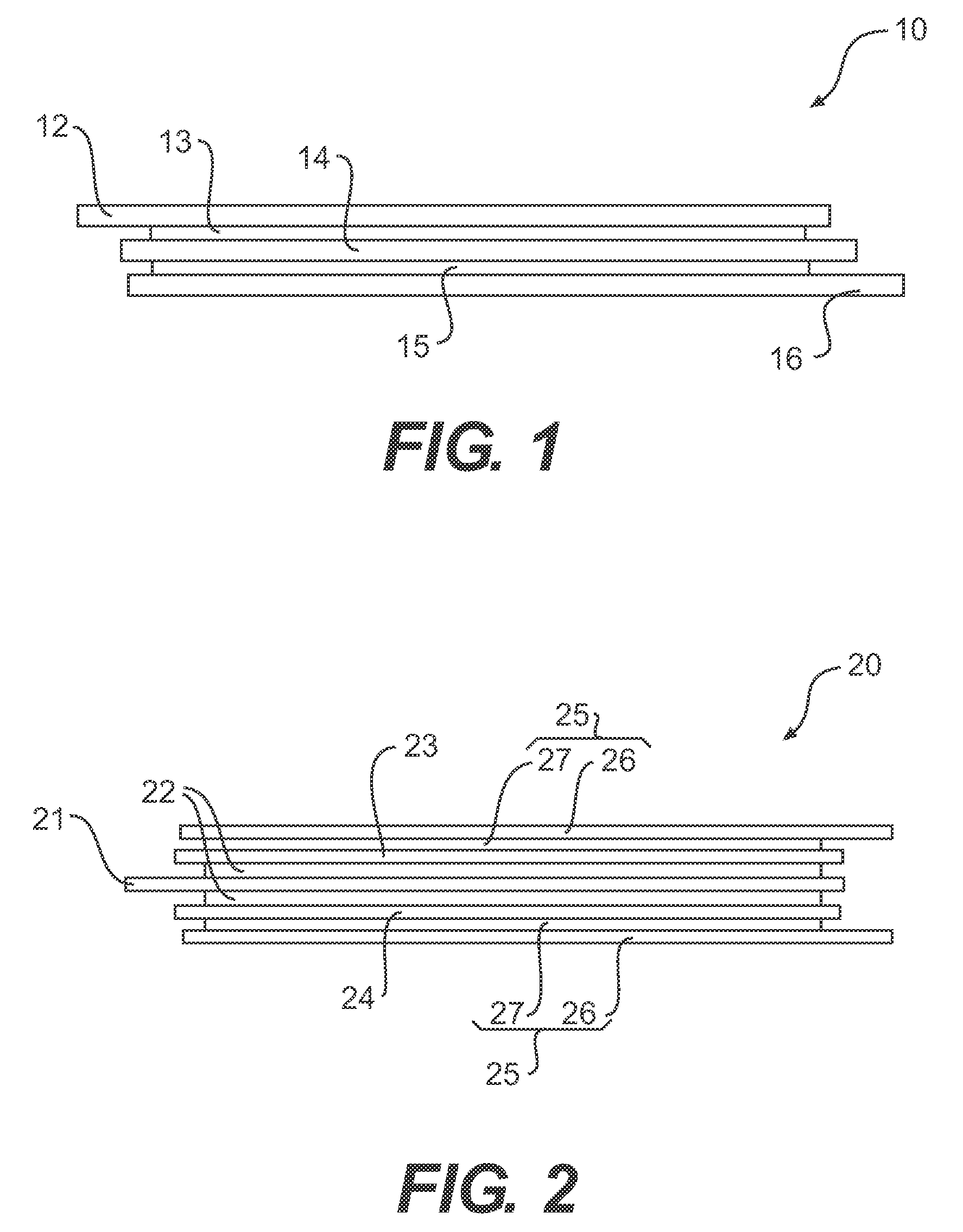Lithium Ion Rocking Chair Rechargeable Battery
a lithium ion rocking chair and rechargeable battery technology, which is applied in the direction of cell components, final product manufacturing, sustainable manufacturing/processing, etc., can solve the problems of irreversible capacity loss of lithium ion batteries or cells, electrolyte (solvents and salts) is not thermodynamically stable, and the capacity loss is irreversibl
- Summary
- Abstract
- Description
- Claims
- Application Information
AI Technical Summary
Benefits of technology
Problems solved by technology
Method used
Image
Examples
Embodiment Construction
)
[0024]FIG. 1 illustrates a typical Li-ion cell 10 having a mono-face configuration. The Li-ion cell 10 comprises an anode or negative current collector 12 to which is layered an anode 13 consisting of an anode active material bound together with a polymer material and optionally an electronic conductive additive. Li-ion cell 10 further comprises a cathode or positive current collector 16 to which is layered a cathode 15 consisting of a cathode active material bound together with a polymer material and optionally an electronic conductive additive. An electrolyte separator 14 is positioned between the anode 13 and the cathode 15 to electrically isolate anode 13 from cathode 15 yet permit lithium ions to migrate from anode 13 to cathode 15 during discharge and from cathode 15 to anode 13 during charge.
[0025] As illustrated, the negative current collector 12 extends from one end of the Li-ion cell 10 and the positive current collector 16 extends from the other end of the Li-ion cell 1...
PUM
| Property | Measurement | Unit |
|---|---|---|
| reduction potential | aaaaa | aaaaa |
| reduction potential | aaaaa | aaaaa |
| temperatures | aaaaa | aaaaa |
Abstract
Description
Claims
Application Information
 Login to View More
Login to View More - R&D
- Intellectual Property
- Life Sciences
- Materials
- Tech Scout
- Unparalleled Data Quality
- Higher Quality Content
- 60% Fewer Hallucinations
Browse by: Latest US Patents, China's latest patents, Technical Efficacy Thesaurus, Application Domain, Technology Topic, Popular Technical Reports.
© 2025 PatSnap. All rights reserved.Legal|Privacy policy|Modern Slavery Act Transparency Statement|Sitemap|About US| Contact US: help@patsnap.com


